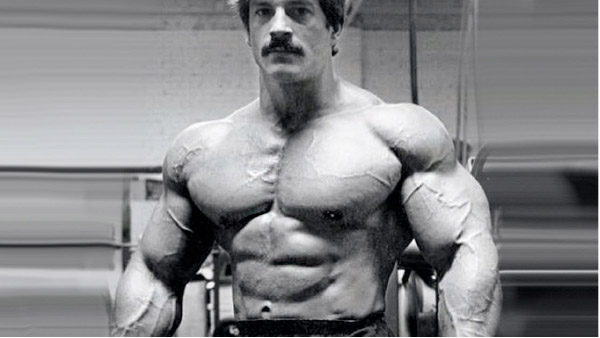
Muscle Strength Defined; Shades and degrees
Featured Muscle Building Tools: dumbbells, barbells, kettlebells, strength equipment
There is a synergistic relationship between muscle strength and muscle size. One surefire way to grow a target muscle significantly larger is for that muscle to somehow become significantly stronger. Muscles grow and strengthen in response to the self-inflicted stress of progressive resistance training with dumbbells, barbells, kettlebells, etc.. Differing stress levels create differing physiologic responses; by altering the dose and duration we can conjure up a desired effect. Grow significantly stronger and become significantly more muscular – simple as that.
There are differing types of muscular strength. By differentiating and defining the types and kinds of strength, the shades and degrees of strength, elite trainees can create training templates that attack each type of strength individually. If you were to create a strength bar graph, running left to right, you would encounter a wide spectrum of strength types…
Absolute strength…………………Explosive strength…………………Sustained-strength
- At the extreme left of the bar graph is absolute strength: best exemplified by the sport of powerlifting wherein competitors post single-rep maximum attempts in the squat, bench press and deadlift.
- In the middle of the strength bar graph is explosive strength: best exemplified by an Olympic weightlifter performing lighting fast single-rep maximums in the snatch and clean and jerk.
- At the extreme right of the strength bar graph is sustained strength: best exemplified by high-rep kettlebell training, MMA fight training and Strong Man type drills that tax strength and endurance.
No one strength type trumps the others. Too many topflight athletes make the mistake of confining their strength training to one or two of the three strength types while eschewing the other types of strength as unnecessary or a waste of time. Any athlete that purposefully ignores training a particular strength type is leaving gains on the table and creating a chink in their athletic armor.
Ignoring absolute strength training invites being overwhelmed by a bull-strong opponent. What good is it to have a 500-pound bench press if you get gassed walking up three flights of stairs? Explosive strength needs to be buttressed with raw power: who cares if you are explosive with poundage my grandmother could lift? Not one, not two, all three.
Optimally, ideally, the complete elite strength athlete is a master of all kinds, types and varieties of strength. How would the conscientious athlete pay homage to all three strength types within the same training week?
Day 1 hi-bar back squat, jerk off the racks
Day 2 bench press, biceps, triceps, abs
Day 3 kettlebell session, sprint cardio
Day 4 deadlift, power clean, Romanian deadlift
Day 5 front squats, chins, row, arms
Day 6 strongman session, sprint cardio
Day 7 off
They say variety is the spice of life and assuming you had the time, strength equipment, situation and the inclination, you would be hard put to top the sophisticated variety of this particular training split. All the strength bases are covered: absolute, explosive and sustained strength, all given equal due and all attended to individually over the course of the training week.
Within this template there is a beautiful flow between the three strength types. Muscles are worked maximally then allowed to recover as different energy pathways are bought online; the three strength modes are each in turn activated and then rested. This broad-based approach would also have maximum athletic applicability: the ultimate athlete has brute power combined with explosive strength and finished off with a healthy dose of muscular endurance.
The smart athlete takes into consideration the three types of muscular strength and allocates a proportionally appropriate amount of training time for each. Variety keeps the strength training vibrant, exciting and exhilarating. Note that though the template is varied none of the individual sessions should take more than 45-minutes to complete. If you are serious about building strength you need to think broadly and conceptually: up your game by broadening your approach.
About the Author
As an athlete Marty Gallagher is a national and world champion in Olympic lifting and powerlifting. He was a world champion team coach in 1991 and coached Black's Gym to five national team titles. He's also coached some of the strongest men on the planet including Kirk Karwoski when he completed his world record 1,003 lb. squat. Today he teaches the US Secret Service and Tier 1 Spec Ops on how to maximize their strength in minimal time. As a writer since 1978 he’s written for Powerlifting USA, Milo, Flex Magazine, Muscle & Fitness, Prime Fitness, Washington Post, Dragon Door and now IRON COMPANY. He’s also the author of numerous books including Purposeful Primitive, Strong Medicine, Ed Coan’s book “Coan, The Man, the Myth, the Method" and numerous others. Read the Marty Gallagher biography here.

